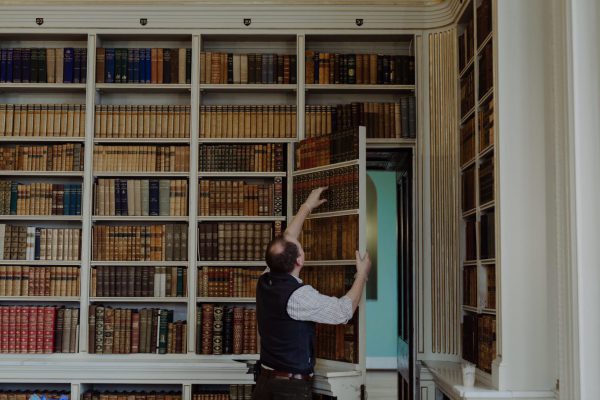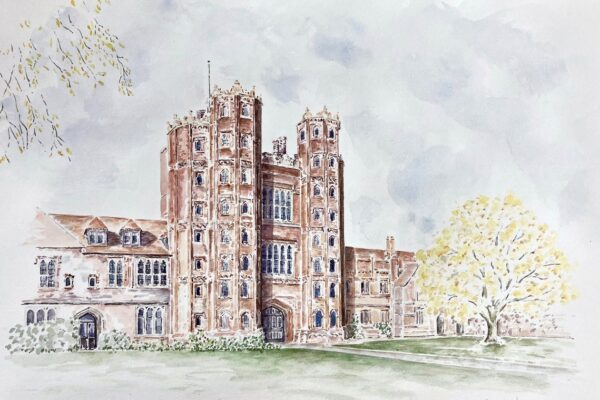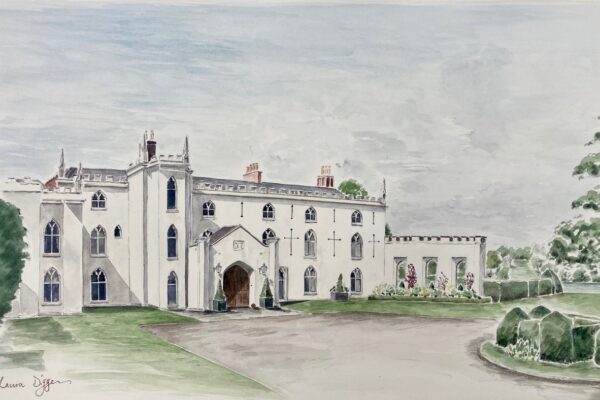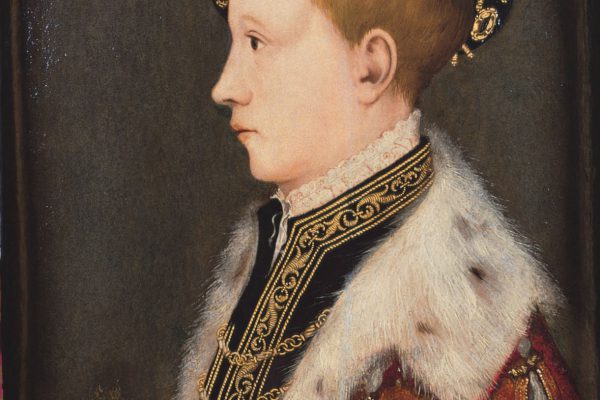Our June painting: Laura Diggens paints Sezincote
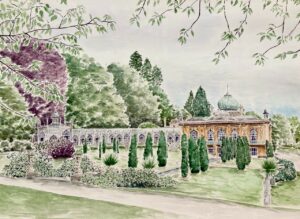
The warm days just after the Solstice broke for my visit to Sezincote earlier this month and the searing heat was replaced by a light cloud that sat overhead all day, interspersed with rumbles of thunder and short sharp showers. The June gardens, likely relieved to have a respite from the scorching sun.
Leaving Stow-on-the-Wold and heading north, the road to Sezincote has dramatic and sweeping views across the Evenlode valley to your right and the dark pinnacles of parish churches appeared above full leafed native woodland sitting amongst a patchwork of arable fields to the skyline.
On entering Sezincote, a tunnel of oak trees, interspersed with lower canopied magnolias stand above meadows of pyramidal, common spotted and bee orchids; easily spotted because of their profusion. The orchids delight further on in the garden too. Set above the house, the meadow bank below the Dairy is stuffed full of not only orchids but an array of meadow flowers such as knapweed, scabious and bedstraw.
Sweeping down the hill and over the Indian bridge flanked by sculptures of requisite Brahmin bulls, the water gardens drop away to your left while a large pool overlooked by a temple to the goddess Sourya sits above you to the right. Unbeknownst to the traveler on the bridge, under foot is a steppingstone walkway over the spring fed rill that leads you down into the cascading water gardens; waterways that eventually find their way to the Evenlode river in the valley below.
I continued straight on, with the unchanged Repton landscape surrounding the famous bright copper onion domes of the house.
Sezincote was the brain child of Colonel John Cockerell, the grandson of diarist Samuel Pepys who famously documented the Great Fire of London. Colonel John Cockerell had spent many years in India and had amassed a fortune with the East India Trading company.
John died three years later, and his brother Charles commissioned his brother Samuel, an architect, to design and build a house in the Mughal style of Rajasthan. The house was to be complete with minarets, peacock tail windows, jali work, railings, and pavilions, all created using the local Cotswold stone. The Prince Regent visited in 1807. So inspired and impressed by Sezincote, he created his plans for the exterior of the new Brighton Pavilion, designed by John Nash, to echo the Indian style.
The east façade of Sezincote house has commanding views down the valley but it is the south façade, with the soft sweep of the adjoining orangery, that is the more recognised aspect. The orangery’s peacock tailed arched doorways open out into the garden with fuchsia positioned in large terracotta pots in each doorway injecting colour and jasmine creeps over the interior walls.
Sitting in the orangery looking out over the south garden as rain steadily fell, I studied the architectural curiosities of the house with its turquoise railings perfectly offsetting the ochre of the Cotswold stone. It is unique and unexpected, tucked away in this corner of England. The house and garden seem frozen in time. The immediate and surrounding landscape little changed two hundred years later could even still be recognisable to Colonel John Cockerell and Humphry Repton.
Related links from Historic Houses
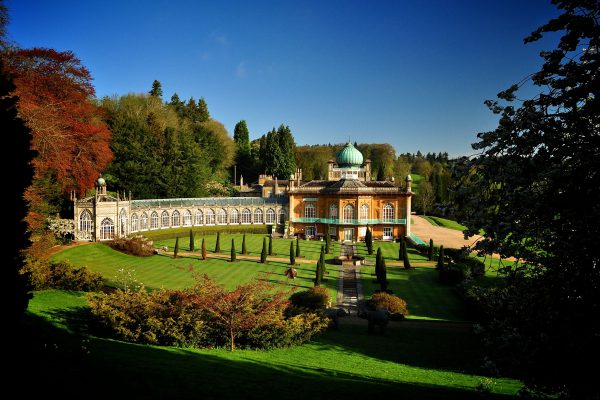
Sezincote
Moreton-in-Marsh, Gloucestershire, GL56 9AW

